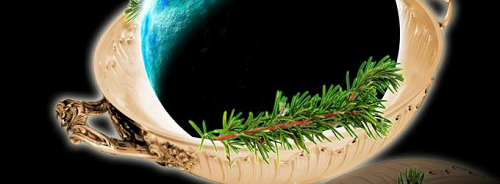New Instrument Reveals Recipe for Other Earths
How do you make an Earth-like planet? The "test kitchen" of Earth has given us a detailed recipe, but it wasn't clear whether other planetary systems would follow the same formula. Now, astronomers have found evidence that the recipe for Earth also applies to terrestrial exoplanets orbiting distant stars.

"Our solar system is not as unique as we might have thought," says lead author Courtney Dressing of the Harvard-Smithsonian Center for Astrophysics (CfA). "It looks like rocky exoplanets use the same basic ingredients."
The key to the discovery was the HARPS-North instrument on the 3.6-meter Telescopio Nazionale Galileo in the Canary Islands. (HARPS stands for High-Accuracy Radial velocity Planet Searcher.) It is designed to accurately measure the masses of small, Earth-sized worlds. Those measurements are crucial to determine densities and therefore compositions.
"Our strategy for using HARPS-North over the past year has been to focus on planets less than two times the diameter of Earth and to study a few planets really well," explains Harvard astronomer David Charbonneau (CfA), who currently heads up the HARPS-North Science Team.
Most recently the team targeted Kepler-93b, a planet 1.5 times the size of Earth in a tight, 4.7-day orbit around its star. The mass and composition of this world were uncertain. HARPS-North nailed the mass at 4.02 times Earth, meaning that the planet has a rocky composition.
The researchers then compared all ten known exoplanets with a diameter less than 2.7 times Earth's that had accurately measured masses. They found that the five planets with diameters smaller than 1.6 times Earth showed a tight relationship between mass and size. Moreover, Venus and Earth fit onto the same line, suggesting that all these worlds have similar rock-iron compositions.
As for the larger and more massive exoplanets, their densities proved to be significantly lower, meaning that they include a large fraction of water or other volatiles, hydrogen and/or helium. They also showed more diverse compositions rather than fitting into a single group like the smaller terrestrial worlds.
The team also noted that not all planets less than six times the mass of Earth are rocky. Some low-mass worlds with very low densities are known (such as the planets in the Kepler-11 system). But for typical close-in small planets, the chances are high that they share an Earth-like composition.
"To find a truly Earth-like world, we should focus on planets less than 1.6 times the size of Earth, because those are the rocky worlds," recommends Dressing.
Source: Harvard-Smithsonian Center for Astrophysics
- 267 reads
Human Rights
Ringing FOWPAL’s Peace Bell for the World:Nobel Peace Prize Laureates’ Visions and Actions

Protecting the World’s Cultural Diversity for a Sustainable Future

The Peace Bell Resonates at the 27th Eurasian Economic Summit

Declaration of World Day of the Power of Hope Endorsed by People in 158 Nations

Puppet Show I International Friendship Day 2020

